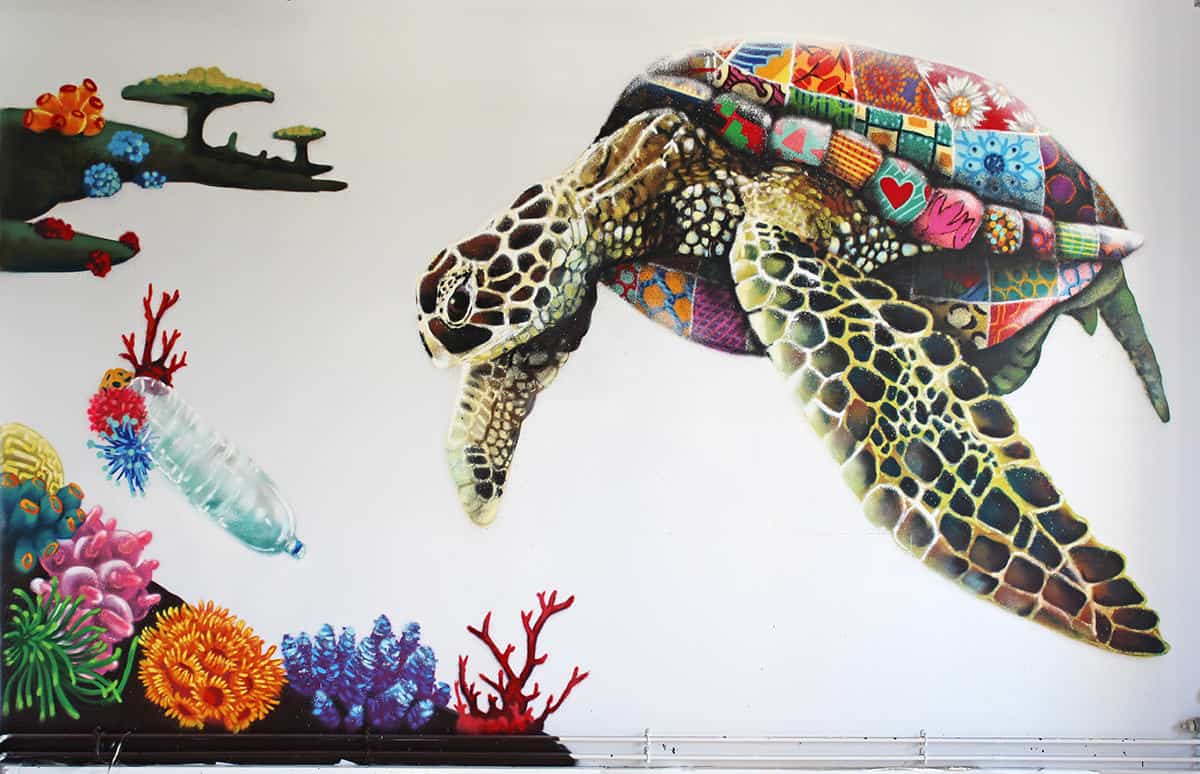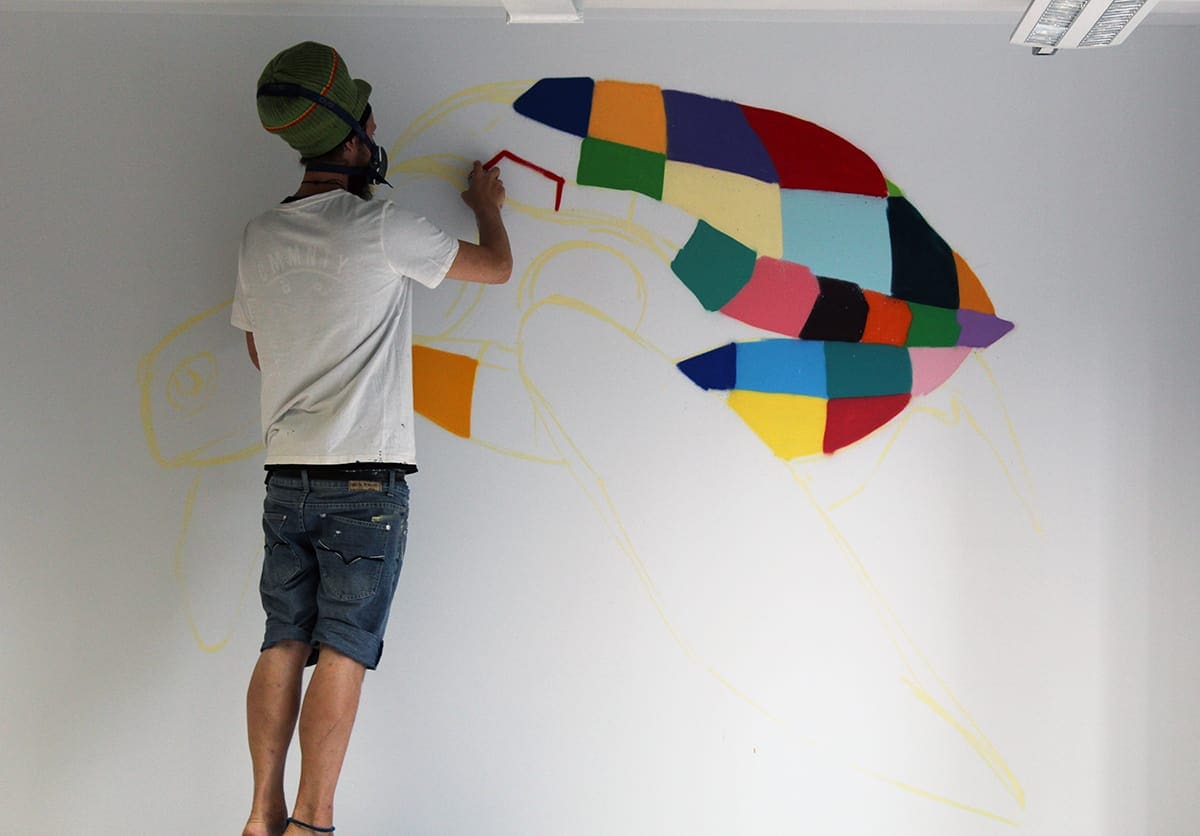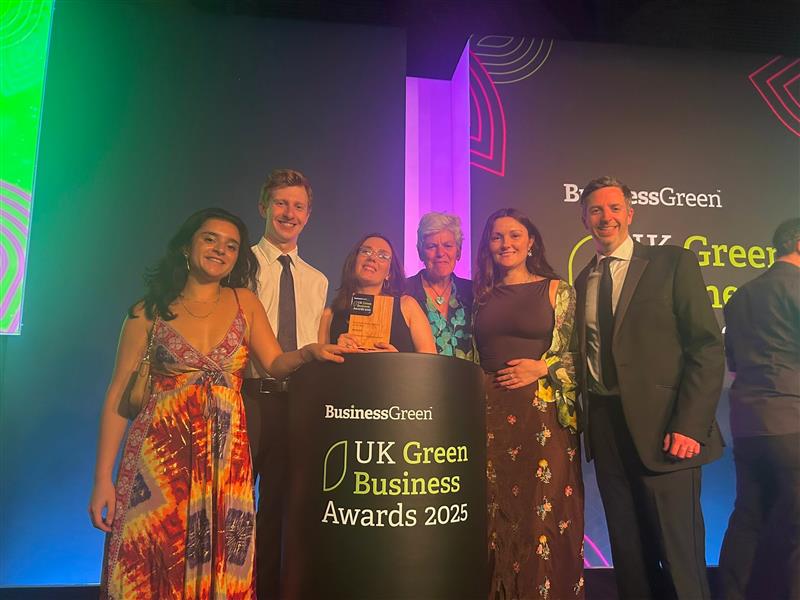Louis Masai creates ‘turtley’ awesome mural at Greenhouse HQ

Renowned artist Louis Masai visited our Bristol HQ last weekend and painted a stunning mural to celebrate the wonder of nature and remind us of the wildlife we are campaigning to protect.
Louis has painted murals featuring endangered species in cities around the world and his iconic patchwork animals are instantly recognisable.
We caught up with Louis to find out what inspired his signature style and why he believes art has an important role to play in addressing climate breakdown.
Tell us about yourself in 20 words or fewer – what’s your mission?
I’m a multimedia artist whose work is all about species and exploring the impact humans have on the environment.
What’s the story behind your amazing patchwork animals?
When I saw the IUCN Red List for the first time, I was horrified. I started to introduce colours on the animals – on their belly, on their ears, just to bring a bit of story to the painting. Then I started a discussion about what happens in a dystopian world. As I was painting toy animals, one of them was a patchwork rhino and I fell in love with it.
The patchwork animals are very prominent in my work at the moment. They won’t necessarily always be there, but they allow me to have a huge vocabulary. On my bigger pieces, you can see almost 200 paintings inside one. That gives the opportunity to tell so much more and to reach a wider and more diverse audience.

What is the role of art in addressing climate breakdown?
First things first; we are human. Therefore, we are a humongous contradiction to ourselves. We will make mistakes and we will destroy things. It’s in our genes and we can’t stop it. We’re very optimistic and good at coming up with solutions but along the way, we also destroy a lot of things. By acknowledging that, I accept that I’m human. I cannot and will not beat myself up about my carbon footprint, but what I can do is try and reduce it.
I take every opportunity to talk about climate change – through my paintings, my podcast, my social media etc. Art is a catalyst for me to have the conversation. It’s the catalyst for me to show that there is beauty around us. If you don’t respect and love nature, it’s gone, and it won’t come back.
An artist is the single most important person inside society. I’m not saying that because I’m an artist and I’m being arrogant; I’m saying that because the first avenue of communication is the drawing. Sapiens’ drawings on cave walls weren’t called art – they were just called communication. Evolutionary development is the ability to communicate with each other in a different way and in multiple ways.
Artists should be opinionated because people listen to them. That’s why it’s important that NGOs work with artists – they have an opportunity to say things that they wouldn’t normally say.
As an artist, I believe in self-evaluation, reflection, integrity, a high level of consciousness and a spiritual path. If you utilise all those gifts that we have as humans, then you realise the opportunity to tune into nature. But if there is no nature left, it’s very hard to tune in, which is an interesting circle.
Do you collaborate with environmental organisations?
I’ve partnered with many organisations including WWF and Born Free, and also brands like The Body Shop and Lavazza Coffee, as part of the UN’s Global Goals.
I do a lot of work with Synchronicity Earth. Last summer we worked together on a project with London Zoo. I painted six animals from the EDGE list, species that are on the brink of extinction and that are particular and unique from an evolutionary perspective. Synchronicity Earth is very forward thinking and they really respect the art world, which can be unusual in this sector. NGOs increasingly recognise the role of the arts, but they’re not engaging yet.
What do you like to paint and why?
In the future I’d like to paint plants. I’m currently trying to direct my work towards agriculture – animals which are in my opinion treated very badly and slaughtered, but also monoculture like palm, sugar, banana.
Did you know bananas are on the way to being extinct? It’s all the way down to mono-farming and we don’t learn from our mistakes.
I would also love to paint trees – they need to be on huge walls like multi-storey buildings with narrow walls which I can’t really paint animals on.

Why did you paint a bottle by the turtle?
We’re finally talking about plastic pollution. David Attenborough talked about it and made it a point of discussion. I can remember there being photos of turtles with plastic beer can rings tied around them from the 1980s. Why wasn’t anyone caring enough then? Why were beer companies still allowed to create those plastics? There has been biodegradable plastic for a long time, so why did it take a TV show and David Attenborough to talk about it?
The plastic bag in my coral painting at Upfest 2018 added an extra level of discussion. It’s no longer just an endangered animal; it’s an endangered animal living in an environment and trying to understand its biodiversity. In my work, I always look for a human attribute to make people understand that they’re part of biodiversity. There’s nothing more human than a plastic bottle because only we make it. The bottle in the painting makes people think. There’s a moment of sadness, but hopefully it will give reflection and make people think twice about their actions.
The reason why I drew coral growing on the bottle is because a recent study has found corals are not just eating micro-plastics, they are enjoying eating it and prefer it over their usual food, which is pretty alarming. The ocean is out of sight and therefore easy to put out of mind.
Tell us about an idea that you’re excited about.
I get too many ideas, that’s my biggest problem. One of them is about eco-bricking. By stuffing a plastic bottle with all non-recyclable plastics, such as the plastic wrap around a cucumber, a crisps packet, or the thin plastic lid on a pack of olives, they can become heavy bricks and be used to build a wall.
I’d like to work with communities like schools, universities and businesses to build a wall using these bottles, then paint marine species that are affected by plastic pollution.
What would you do if you were Prime Minister?
As I truly believe in equality, one of the most important things would be to remove hierarchy. Bearing in mind I would be leading the country, it’s conflicting. But I’d also have to make sure it thrives as a business – because a government is a business.
I would speed up every single positive initiative and commitment the UK government has proposed. To their commitments to removing plastic waste by 2042, or banning diesel cars by 2040, I’d say: “You have until next week. You should have done this a long time ago”.
Finally, I would forbid lying. Everyone would be submitted to a lie detector test. Lies are the biggest issue – it’s so easy to lie to people.
Can you leave us with who’s your Eco-Hero?
I really admire Leonardo DiCaprio. He’s always honest and openly says ‘we are destroying the planet, let’s do something about it’. I hate the idea of celebrity culture but unfortunately, a lot of people love it, so it’s important that celebrities take it on board and become role models.
To find out more about Louis Masai, you can visit his website and follow him on Facebook, Twitter and Instagram.
If your organisation is working to protect endangered species and would like communications support, get in touch with our team and let’s join forces in the fight against climate breakdown.


